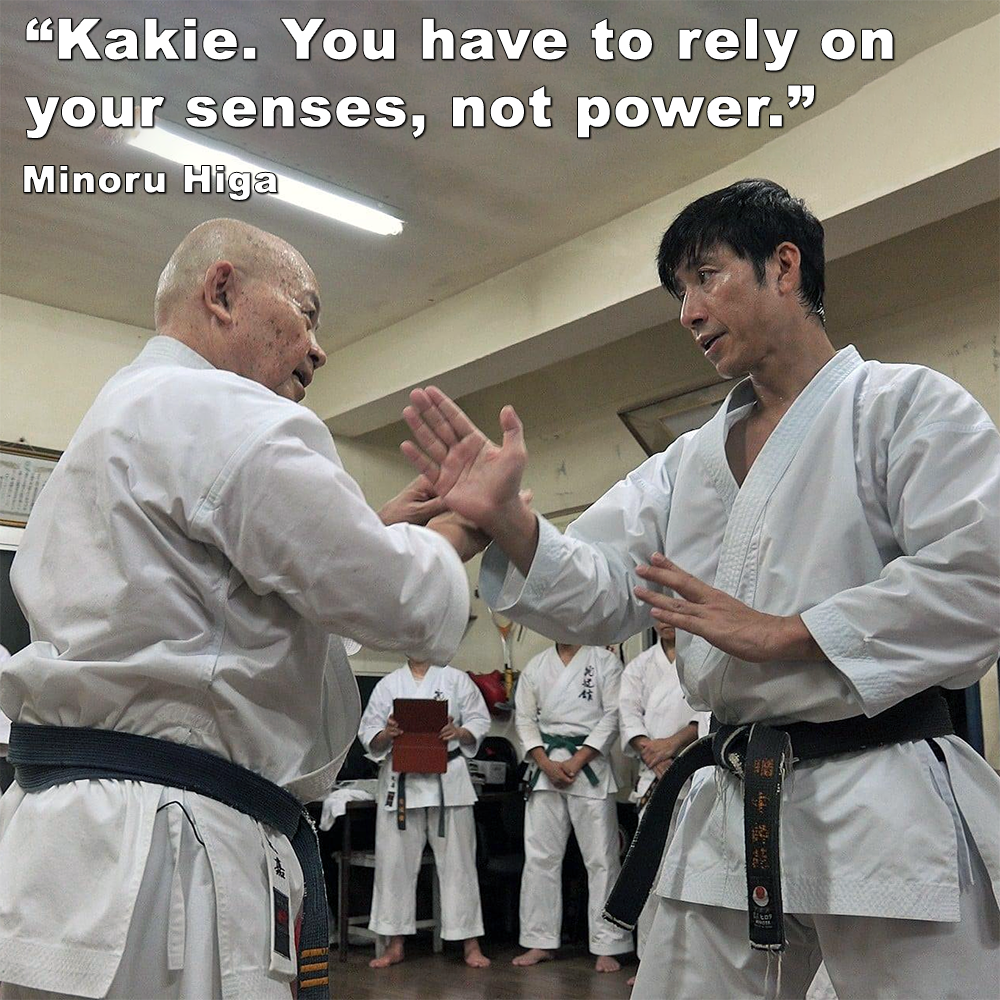
(Approx 1 minute 30 second read)
“Kakie (カキエ). You have to rely on your senses, not power. Targets open up during an exchange, so strike as they open up. You can sense what’s coming even if you’re looking away. It’s all about this feeling.” – Minoru Higa, 10th Dan Kyudokan Shorin Ryu
.
Kakie, often referred to as “pushing hands” or “sticky hands,” is a traditional training method found in various Okinawan karate styles. Sometimes described as a bridge between basic techniques and free sparring, honing a practitioner’s ability to react to an opponent’s movements with sensitivity and precision.
.
At its core, kakie is about developing tactile sensitivity and intuitive responsiveness. Unlike many other forms of training that emphasize brute strength or speed, kakie focuses on the subtle interactions between practitioners. This training requires a sense of awareness and the ability to feel and respond to the opponent’s intentions through touch.
.
Minoru Higa’s quote encapsulates this beautifully. He emphasizes the importance of relying on your senses rather than sheer power. The practitioner’s goal is to sense openings and vulnerabilities in the opponent’s defense and exploit them with various different techniques. This ability to “sense what’s coming even if you’re looking away” speaks to the deep level of sensitivity and awareness that this type of training develops.
.
In kakie practice, two practitioners stand facing each other, maintaining contact with their forearms. They engage in a continuous flow of pushing, pulling, and redirecting each other’s movements. This practice helps develop the ability to maintain balance, control distance, and respond to changes in pressure and direction.
.
The constant, tactile feedback received can help practitioners internalize the principles of balance, timing, and sensitivity. It also teaches them to remain relaxed and fluid, avoiding the rigidity that can lead to vulnerabilities in a real confrontation.
.
While kakie is deeply rooted in tradition, its principles are highly applicable to modern karate training.
.
As Minoru Higa eloquently states, kakie is about relying on your senses and feeling your way through an exchange. By embracing this subtle yet powerful training method, you can unlock a new and fun addition to your training.
.
AC
.
.
Photo Credit: Minoru Higa from “GREAT JOURNEY OF KARATE” Kuro-Obi World with Tatsuya Naka.
.
